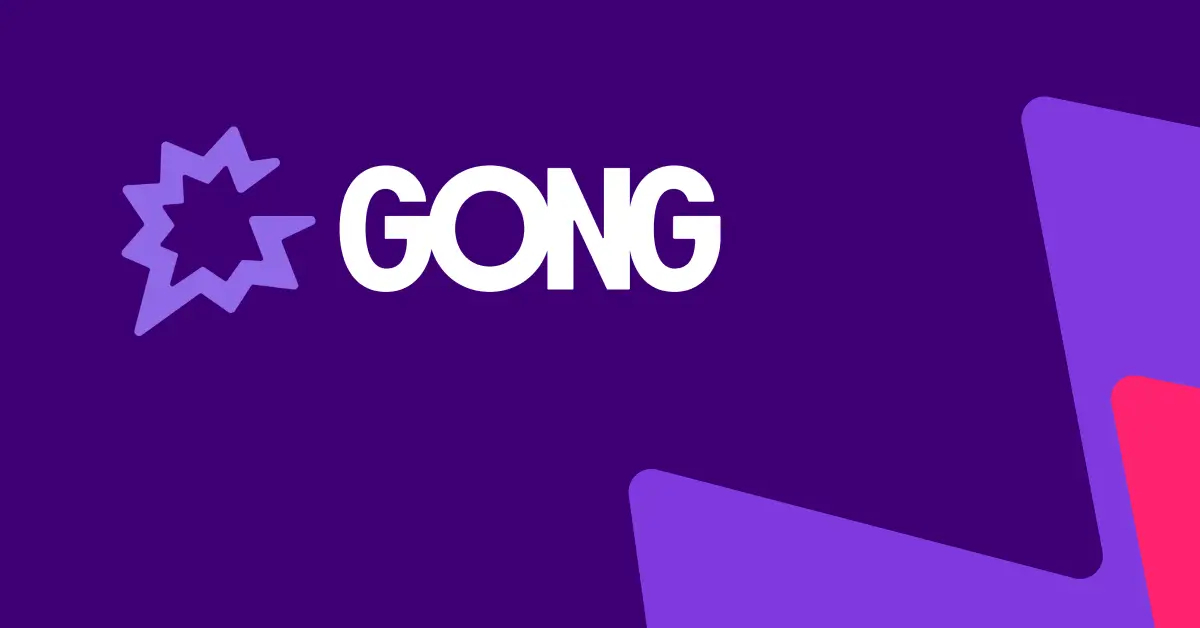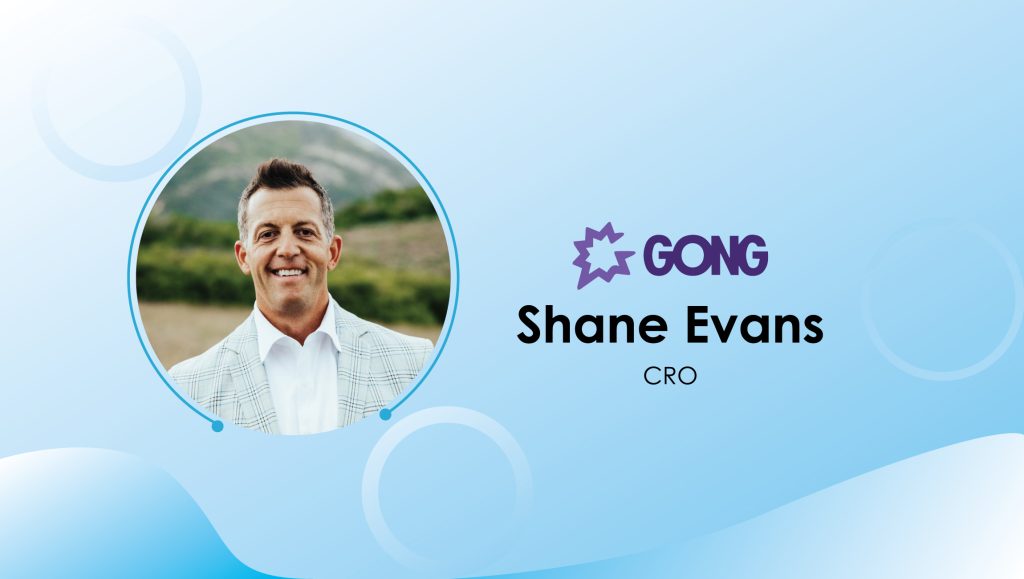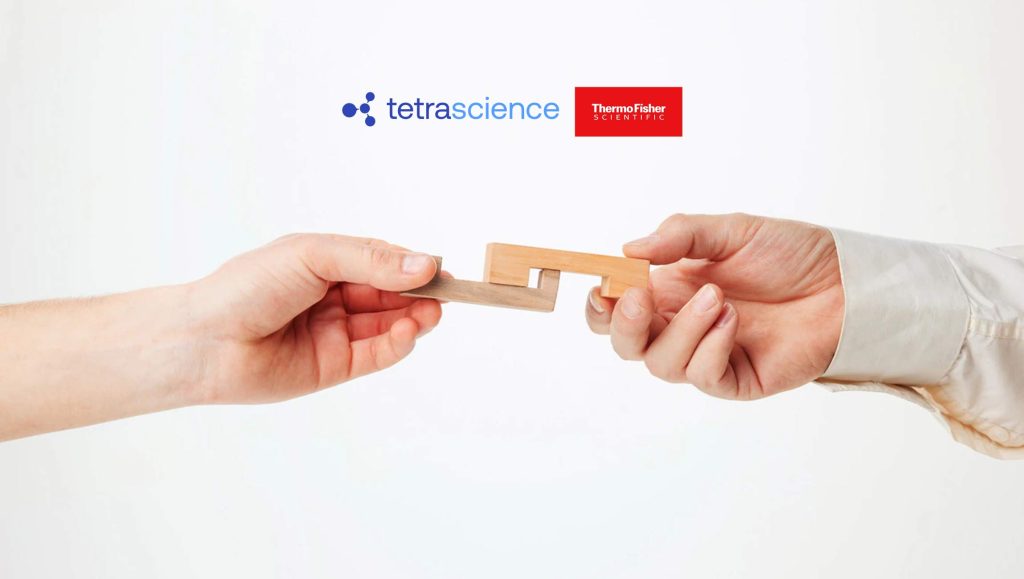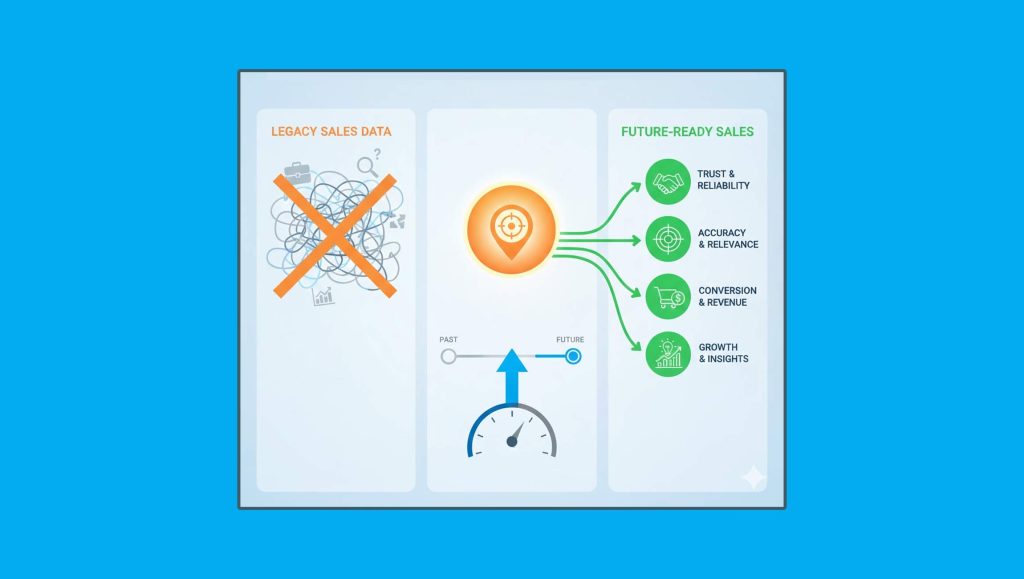Shane Evans, Chief Revenue Officer at Gong chats about the various areas across the typical B2B sales workflow that can benefit from better salestech processes in this Q&A with SalesTechStar:
__________
Hi Shane, take us through your B2B SaaS journey and your role as Gong’s CRO.
I’ve always prioritized roles where I can learn and grow the most. For me, it’s not about having the C-suite title or being in charge of a specific team but rather about working for a mission-driven company that solves a real pain point within their industry.
Before joining Gong as Chief Revenue Officer in the summer of 2023, I held CRO, CEO, and sales organization roles at companies including Qualtrics, PROS, Talkdesk, and MX Technologies. At Qualtrics, I helped grow the experience management company from a single product to a leading enterprise platform and served as interim CEO and president at MX, where I helped accelerate company growth alongside go-to-market teams.
I joined Gong during a pivotal moment in the sales tech industry as enterprises embrace AI. Today, I’m focused on driving Gong’s global revenue strategy by demonstrating the transformative value our AI-powered platform can deliver by increasing team productivity and driving predictable revenue growth.
What, in your view, are some of the biggest factors that are broken in B2B sales and revenue generation?
There are a few key areas that I think are broken and can benefit from technology in B2B sales:
1. Data Capture: A typical sales conversation is about 6,000 words, but a seller’s summary of the conversation in a CRM system is only 40–60 words. While the summary may be directionally accurate, 99% of the conversation, which includes nuances, personalized phrases, and timing or economic indicators, can get lost in manual data translation. The data entered into CRM systems is also subjective and opinionated. Strategic decisions meant to increase revenue should not be made on the backend of partially filled CRM data.
2. Contextual Data: It’s not always what a potential buyer says, but when they say it, how they say it, and what aspect of the conversation prompted them to say it. Take, for example, the moment during a call when a buyer mentions a competitor. Since 2022, the average number of competitor mentions during sales deals has increased by 57%. But if a competitor is mentioned early in the call, that likely means they’re an informed buyer—they’ve done research on the space and have some sense of the different players. If they mention them later in the call, it’s often in the context of asking for a discount. This is valuable context for sellers and can only be accurately interpreted when 100% of the conversation is captured.
3. Critical Workflows: Think about the workflows that matter the most to a revenue team’s success: Coaching and developing high-performing teams, increasing revenue predictability, and driving growth through pipeline creation, management, and conversion (and don’t forget about retention). Having spent more than 25 years in GTM organizations, I can tell you that all revenue teams struggle to optimize each of these because they are complex, require coordination across multiple functions, and have historically lacked the necessary data and automation.
Take forecasting as an example. Gong was founded after one of our co-founders had a quarter from hell at a previous company with an unexpected miss. The CRM data being used at the time for forecasting was woefully inaccurate. Leaders across sales, customer success, marketing, and finance didn’t have answers. We’re still seeing the same “flying blind” processes at organizations today, and it continues to lead to low revenue predictability and missed goals.
Read More: SalesTechStar Interview with Chris Nelson, VP, Global Sales and Business Development, HYCU, Inc.
What do you feel modern CROs need to do to better drive optimum growth and output from their teams?
Creating a culture of transparency and empowerment across the GTM organization is critical. It’s also imperative that teams are aligned on product-market fit and ideal customer profile.
- Product-market fit: Are you selling a product that solves a significant pain point? What is that pain point, and how is your organization solving it better than competitors?
- Ideal customer profile: No one-size-fits-all strategy leads to 100% closed sales deals. However, creating an environment where all teams involved in a customer’s life cycle are aligned on who the business is selling to and what outcomes the potential customers want allows for a clear pathway to sustainable growth.
Leaders who align their teams, prioritize transparency and collaboration, and empower every individual to make decisions are more likely to drive output and growth.
How are you seeing AI change the game for sales and revenue teams?
AI is making a huge impact on revenue teams – I don’t think there has ever been a more disruptive and exciting time. It’s well understood that teams spend the majority of their time on non-selling, administrative activities. AI has massive potential to help teams reclaim that time and put it toward meaningful selling activities and relationship building.
But there are so many more applications of AI that are changing the game, from improved forecasting to rolling out new strategic initiatives to pipeline creation and conversion. Here’s another example: we just launched a new version of our Smart Trackers tool, which gives sales and revenue teams an easy way to train their AI and search for concepts rather than keywords. As part of this update, revenue teams can now use one of Gong’s AI Methodology Playbooks; sales leaders can set their sales methodology (like MEDDIC) and then use Gong’s Smart Trackers to understand if the methodology has been met in interactions with customers. These methodologies and frameworks are crucial for sales and revenue teams – 95% of successful teams adhere to one of these methodologies – but compliance with them can be time-consuming. AI is making it easier for teams to adopt the practices that are ultimately shown to make them more successful.
Can you talk about your favorite things about AI in Sales?
Happy Sellers and Customers: Do you know what sellers love doing? Working with prospects and customers to solve their problems, understanding short- and long-term goals, and becoming a trusted partner. Do you know what they hate? Administrative work, like updating CRM systems and forecasts in spreadsheets, summary emails, etc. It’s the drudgery of sales. AI is already helping sellers reduce administrative work by automating tasks, surfacing priority to-do actions, preparing for meetings, and automatically updating CRM systems, among others. That makes for happier, more successful teams. And as a result, happy customers.
Better Coaching: As much as managers intend to provide thorough coaching, it’s often one of the things that fall by the wayside when it gets busy. Most companies use scorecards to provide feedback after a customer interaction, and they can be very helpful if a leader has the time to listen to the interaction and score it. All too often, they don’t, and coaching opportunities to reinforce best practices suffer. AI is an incredible way to provide unbiased feedback and data-informed training to revenue teams on a more consistent basis. AI can automatically suggest answers to scorecard questions with extremely high accuracy, which streamlines the coaching process and helps make sellers more successful.
More Informed Decision-Making: Sales leaders make critical decisions daily, but we lack the right data at our fingertips. How is a new pricing initiative landing? At what stage is pipeline conversion dropping off? Are new competitors impacting win rates? We now have access to all of this data based on what customers and prospects are actually saying. Here’s a real example: I was asked to help with an account renewal, and I wanted to get up to speed as quickly as possible. I asked Gong’s platform, “What are the customer’s fiscal year goals?” and “Is there risk associated with this renewal?” and it analyzed years worth of customer interactions to surface powerful insights that I was able to use to direct the path forward.
Read More: How BNPL is Shaping the Future of e-commerce

Gong transforms revenue organizations by driving business efficiency, revenue growth, and improved decision-making. The Revenue Intelligence Platform uses proprietary artificial intelligence technology to enable teams to capture, understand, and act on all customer interactions in a single, integrated platform. Thousands of companies around the world rely on Gong to support their go-to-market strategies and grow revenue efficiently. For more information, visit www.gong.io.
Shane Evans brings over 25 years of enterprise revenue and go-to-market experience to Gong. He joined the company amidst a pivotal moment in the sales tech industry as companies continue looking for ways to streamline their sales process through AI. Prior to joining Gong, Shane led global sales at Qualtrics before and after its multi-billion dollar acquisition by SAP, helping grow the experience management company from a single product to a market-leading enterprise platform. Shane also served as interim CEO and president at MX, where he helped accelerate the fintech company’s growth.





















